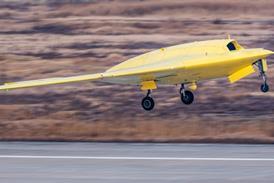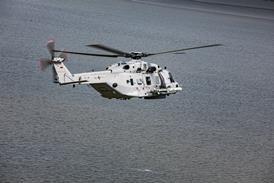GUY NORRIS / LOS ANGELES
Modernisation to form part of transformation towards Objective Force doctrine
Boeing could learn next month what level of AH-64D Apache Block 3 upgrade will be funded by the US Army as part of its move towards the so-called Objective Force.
The army included the Apache in the long-term Objective Force attack element late last year. Boeing and the army have now defined the bulk of the upgrade, which is required to make the attack helicopter an effective part of the new doctrine.
Boeing's proposal includes projected cost and time savings achievable if the upgrades are incorporated in a single programme, rather than implemented piecemeal. Based on the upgrade of five aircraft a month for 60 months, Boeing believes Block 3 can be introduced with 43% less "downtime" and for 26% less than the cost of a partial upgrade. A positive decision would boost Boeing's workload during a potential production gap around 2006.
The army is expected to finalise work by the end of May, indicating funding priorities for fiscal years 2004-5. If Block 3 is approved by year-end, Boeing could receive an initial contract around October next year to fully define the upgrade and its implementation. Subsequent contracts would be issued to cover the upgrade work, with first delivery around October 2007.
Although further definition is required "we think we know where the army wants to go", says Boeing Apache modernisation programmes manager Larry Plaster. "They want to have a seamless communications network capability and Block 3 will give them that. They need an aircraft that is capable of fitting into the network-centric environment and that is still affordable," he adds.
Block 3 priorities include an open system architecture and work aimed at operational and support cost reductions.
The open system will be a spin off from technology for the manned/unmanned common architecture programme, while digital connectivity and cost reductions will come from the Joint Tactical Radio System.
Other priorities are airborne control of an unmanned air vehicle, a transmission upgrade, composite rotor blades, fly-by-wire flight control system and embedded diagnostics. Also on the list are range extensions for the fire control radar, radio frequency interferometry frequency extension and passive ranging.
Source: Flight International























